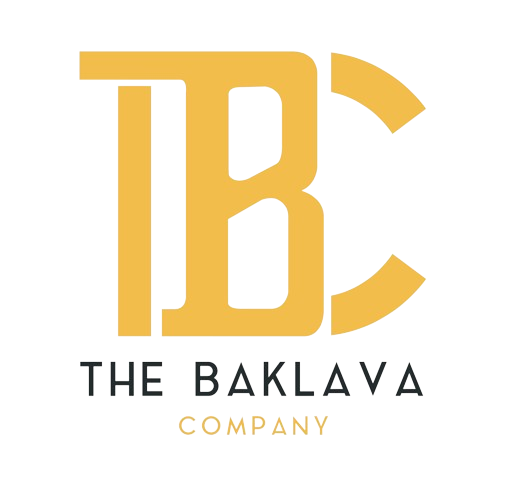Baklava, a sweet and flaky pastry, has been a beloved dessert for centuries and is enjoyed by people in various parts of the world. While the exact origins of baklava are not fully agreed upon by historians, some believe that it can be traced back to Ancient Assyria, while others attribute its creation to the Ottoman Empire. Regardless of its origins, baklava has become a global delicacy that has been adapted and modified in different regions, resulting in a multitude of unique variations and styles. The art of making baklava involves layering thin sheets of phyllo dough with a mixture of chopped nuts, sugar, and spices, then drenching the pastry with sweet syrup or honey. The combination of crispy phyllo layers and a rich nutty filling soaked in syrup results in a satisfying dessert that has stood the test of time. Today, baklava can be found in various shapes and sizes, from small bite-sized pieces to larger layered cakes, and is enjoyed by people of all ages and backgrounds.
Talking a bit of its history –
Baklava, with its delicate layers of flaky pastry and sweet, nutty filling, is a beloved dessert that has been enjoyed for centuries across the globe.
Originating from the Ottoman Empire, different cultures adapted and refined baklava, resulting in various unique and delicious variations. From Turkey to Greece, the Middle East to India, North Africa and the Balkans, baklava has become integral to many countries’ culinary traditions.
This blog will take you on a global journey to explore how this sweet pastry is enjoyed in different cultures and learn about the ingredients, preparation, and serving methods that make each variety special. So, please sit back, grab a cup of tea or coffee, and join us on a mouth-watering adventure through the global world of baklava.
Here are some examples of how baklava is enjoyed around the world:
Turkey:
Baklava is believed to have originated in the Ottoman Empire, which is now modern-day Turkey. Turkish baklava is typically made using thin sheets of phyllo dough, layered with chopped nuts, such as pistachios or walnuts, and then soaked in a sugar syrup flavoured with rose water or lemon juice. In Turkey, baklava is not only a dessert but also a cultural symbol, and it is a treat often served during celebrations and special occasions. The delicate layers of phyllo dough are carefully arranged to create a beautiful pattern that is as much a feast for the eyes as for the taste buds. If you want to explore this type of Baklava, it would be worth checking out the offerings from TBC & Co. (The Baklava Company).
Greece:
Baklava was introduced to Greece during the Ottoman Empire and has since become a popular dessert in Greek cuisine. It is often served during special occasions such as weddings and religious holidays.
In Greece, baklava is typically made with layers of phyllo dough that are brushed with butter and then filled with a mixture of ground walnuts, cinnamon, and sugar. The pastry is baked until golden brown and drizzled with honey syrup. Greek baklava is often enjoyed as an after-dinner treat, accompanied by a cup of strong coffee or sweet wine. The syrup used to sweeten the pastry is an essential element of the dessert, and its flavour can vary depending on the region and personal preferences. At TBC & Co. (The Baklava Company), we offer this type of Baklava for you to savour and relish!
Middle East:
Baklava is prevalent in many Middle Eastern countries, including Lebanon, Syria, and Jordan. In these countries, baklava is often made with chopped nuts, such as pistachios or almonds, and flavoured with rose water or orange blossom water. In the Middle East, baklava is a dessert steeped in tradition and enjoyed for centuries. The combination of nuts and sweet syrup is a classic flavour pairing enjoyed across the region, with each country adding its unique touch to the recipe. If you would like to try any of these varieties, TBC & Co. (The Baklava Company) offers them all.
Balkans:
In the Balkan region, baklava is known as “baklava” or “baklawa” and is typically made using layers of phyllo dough filled with chopped nuts, such as walnuts or pistachios, and then soaked in a sugar syrup that is flavoured with lemon juice or rose water. In the Balkans, baklava is a staple of the dessert table, and it is often served during festivals and celebrations. The layers of phyllo dough and chopped nuts are a winning combination, and adding the sugar syrup takes the pastry to a new level of deliciousness. TBC & Co. (The Baklava Company) offers this variety as a must-try option for anyone interested.
India:
In India, baklava is known as “baklawa” and is often made with cashew nuts, almonds, or pistachios and flavoured with cardamom or saffron. The pastry is typically made using phyllo or similar pastry dough and is soaked in a sugar syrup flavoured with rose water or lemon juice. Indian baklava is a fusion of traditional Middle Eastern and Indian flavours, with the addition of aromatic spices such as cardamom and saffron. The result is a unique and delicious dessert enjoyed across the country.
North Africa:
In North Africa, baklava is known as “baklawa” and is often made with almonds, hazelnuts, or walnuts. The pastry is typically flavoured with orange blossom water or rose water and soaked in a sugar syrup flavoured with cinnamon or lemon juice. In North Africa, baklava is a dessert enjoyed across the region, with each country adding its unique twist to the recipe. Using orange blossom or rose water adds a floral note to the pastry, which pairs perfectly with the nutty filling and sweet syrup.
To conclude,
Today, baklava is a popular dessert enjoyed in many different countries and cultures around the world, with each region having its unique variations and styles wanted all around.


Recent Comments